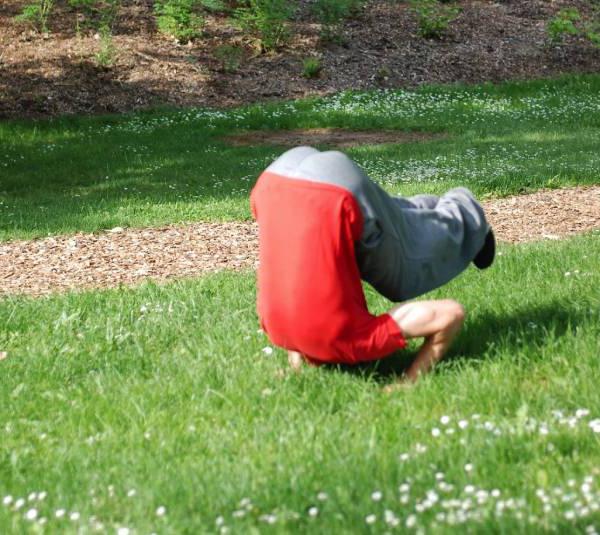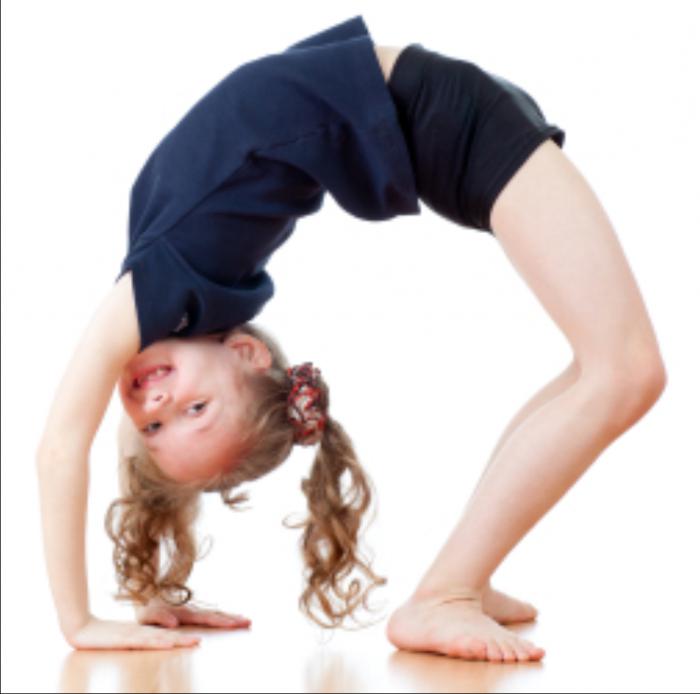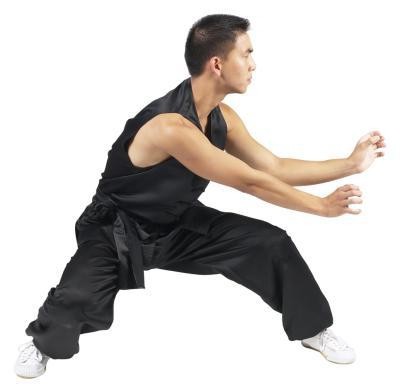Technique of performing somersaults back. Gymnastics
Basic acrobatic exercises (for example,somersaults) are usually unlearned in physical education classes in primary school. They are useful for general physical development. The technique of performing somersaults back and forth is not difficult, therefore, as a rule, almost no one has problems with these exercises. However, the correct implementation of somersaults is the necessary basis for more complex, requiring good coordination of movements, acrobatic jumps.

What is gymnastics?
Gymnastics is a complex of physicalexercises designed to strengthen and develop individual muscle groups. It is accepted to distinguish between basic, auxiliary (curative), industrial, sports and artistic gymnastics. For gymnastics are exercises that involve the presence of good physical fitness and the ability to control your body. Among them - rolling, balancing and various acrobatic jumps, to which, strangely enough, are listed and somersaults forward and back from different positions.

It is believed that the best age for starting classesgymnastics - 4-5 years (in some countries - 2-3 years). For many months the child learns simple stretching exercises and coordination and only then goes to more complex exercises. If safety standards are observed, gymnastics is not the most "extreme" kind of physical activity. It helps to strengthen muscles and increase endurance, practically has no contraindications.
Why do we need a rollover?
As already mentioned, mastering basic exercises(rolls and somersaults) provides for the improvement of physical fitness, increasing dexterity and strengthening the vestibular apparatus, and, therefore, the development of coordination. The ability to correctly perform a rollover helps in mastering the technique of safe falls, which is useful in any sport and in everyday life. Flip-flops are an indispensable element of martial arts (ju-jitsu, sambo and especially aikido).

Also these exercises are necessary for everyone whois going to study complex acrobatic jumps - primarily various flips and coups. A person who has a good idea of how to do a somersault back, without any problems, will execute it on any surface - both soft and hard - and will be able to avoid injuries. Owning one's own body and knowing its capabilities is a consequence of mastering the simplest gymnastic elements, to which the somersault belongs. Thus, the ability to perform it is important not only for children, because it is worth considering the fact that many people begin to engage in sports (for example, wrestling or parkour) in adulthood.
Groupings for somersault back
Groups call such preparatoryexercise, which ensure the correct implementation of flips, rolls and other elements. In themselves, they are simple, but the technique of performing somersaults back involves the preliminary development of each of them. There are the following types of groups: sitting, lying, squatting and wide. Grouping for a somersault can be performed from almost any position: the main pillar, squat or sed. It is not excluded and grouping from the position of lying on the back.
Whatever the starting position, the groupingit is done this way: the gymnast bends her legs, takes over the middle of the shins and pulls her knees to her shoulders. The head tilts forward, the back is rounded, and the elbows are pressed to the sides. Sometimes, in order to understand how to do a somersault back, it is necessary to perform feeding exercises - for example, rocking. In this case, the gymnast begins in squatting and, pressing his chin and knees to his chest, leans back and rolls until he touches the shoulders of the floor. Buttocks in this case should rise. Strongly repel when doing swings is not necessary.

Safety at somersault back
Learning somersault back usually occurs in school,section or kindergarten under the guidance of a physical education teacher or trainer. It is preceded by the mastery of a simpler element - a somersault forward and various auxiliary exercises. The coach helps the child to carry out the correct grouping and, if necessary, insures him. It is important to learn to tumble on comfortable, soft and thick mate. The somersault is performed strictly along the line of the spine. You can not bend your neck to the sides and turn your head. The back should be rounded. When doing a somersault is very important inertia, so you need to strongly push off, and not just fall on your back. Completing the somersault, you need to rely on the hands, not on the head.

It should be borne in mind that with weakvestibular apparatus, there is a risk of dizziness. Therefore, the implementation of somersaults is useful to alternate with walking on a log or curb, jumping rope, rotations. People who have recently suffered a concussion are not recommended to tumble.

Technique of performing somersaults back
You need to sit in a full squat (squat), your backto mat. The head is tilted, knees are pressed to the chest. The palms are on the floor, in front of the person. You should push them vigorously and roll on your back. This movement should be smooth. Touching the surface of the mat with the shoulder blades, you need to move your hands to your head, lean on your fingers and slightly raise yourself to reduce the burden on the head and neck. It is important not to unbend legs and back during the somersault.
Only rolling over your head, you can slightly unbend your knees and take the position of "emphasis squatting." Right back somersault is formed from the timely movement of the hands andrepulsion forces. In fact, it is easier to perform a rollover than describe the technique of its execution. Practice may be required, but this action is not associated with any special difficulties.
Simplified methodology
By it is meant the technique of performingsomersaults back on an inclined, or wedge-shaped, mate. In this case, the gymnast concentrates not on repulsion, but on the movement of the hands, rolls over the head by inertia (as from a slide). This helps the athlete understand the mechanics of the somersault and makes the exercise more comfortable and safe. Concentration on coordination is the right way to the right technique.

Variations of the somersaults back
After the simplest exercise - a roll back from an emphasis sitting down - it is mastered, it is possible to pass tomore complex and interesting variations of this element. However, for the beginning it is necessary to learn an auxiliary exercise - a gray with straight legs from the main rack. It is done this way: the gymnast stretches his legs forward and tilts his head to his knees. At the same time he relies on straight arms, stretched as far as possible back. Hands must be put on the support (mat), and at first the athlete must insure the coach. From the above described position, you can perform a roll back bent over, a somersault back bent over the shoulder and a roll back into the rack on your hands.
The last exercise is the most popular. Its difference from the usual somersault is that after the overturn is over the head the athlete must quickly unbend his legs and at the same time straighten his arms. When teaching this exercise, the athlete must be insured by a friend or coach: standing on the side, supporting the legs at the time of their extension.
Important points
No matter how simple the somersault was, the lesson on hiscorrect execution must first look. Like all basic sports elements, a backward flip must be done by the gymnast without hesitation, "on the machine". If the gymnast feels pain and inconvenience while learning the somersaults, it makes sense to work on the technique, to observe how the exercise is carried out by the section's comrades. It is important to properly group, well to push off, put your hands in time. It is necessary to avoid straightening of the neck and extension of the back during the somersault. Quickly roll over and stand on their feet - that's what the goal should be pursued by a beginner athlete. At the initial stage of training gymnasts are recommended to insure each other (for the waist, standing sideways, along the way).
</ p>







